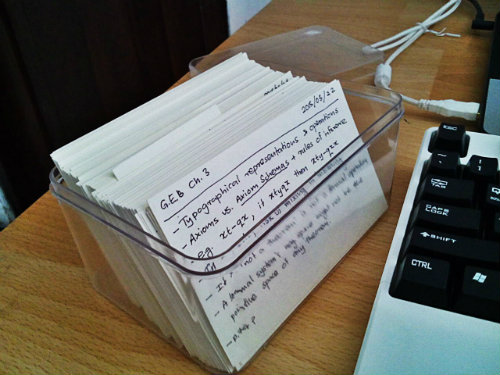Index cards as an Evernote alternative
After 20 years of fiddling with various electronic formats to keep notes and record my thoughts (which I have been doing since I was 15), I’ve finally returned to where I started: pen-and-paper. I got the idea from Umberto Eco’s How to Write a Thesis, a book so brilliant it still remains relevant today, almost 40 years after publication.
An index card is a 3 x 5 inch piece of heavy paper used to record information (often a single idea), first invented by Carl Linnaeus (the botanist who gave us the modern biological naming scheme) about 250 years ago.
Unfortunately, index cards are not locally available. So I had to improvise. I went to Pettah, bought a packet of 200gsm paper (normal photocopy paper thickness is 80 gsm), and had a greeting card shop cut it into 3 x 5’ pieces. I bought a fine felt-tipped pen to write on them (unlike a ballpoint, it forces me to take my time to write neatly). The result:

Unlike paper notepads (which I used in the period between 1996 - 2000), index cards can be re-sorted, re-grouped and organized in any way you wish. Unlike electronic formats (I’ve used everything from Word documents to Google Docs, Evernote to markdown files in a Git repo for the past 15 years), I don’t need to be near a computer, I don’t need to open an editor or wade through a directory structure. I don’t have to worry about diagrams and equations. And I can spread them out on the table, rather than viewing them two or three at a time through a 15.6 inch viewport.
So far, it’s worked out very well – I expect to go through my current supply of 500 cards before June is through.